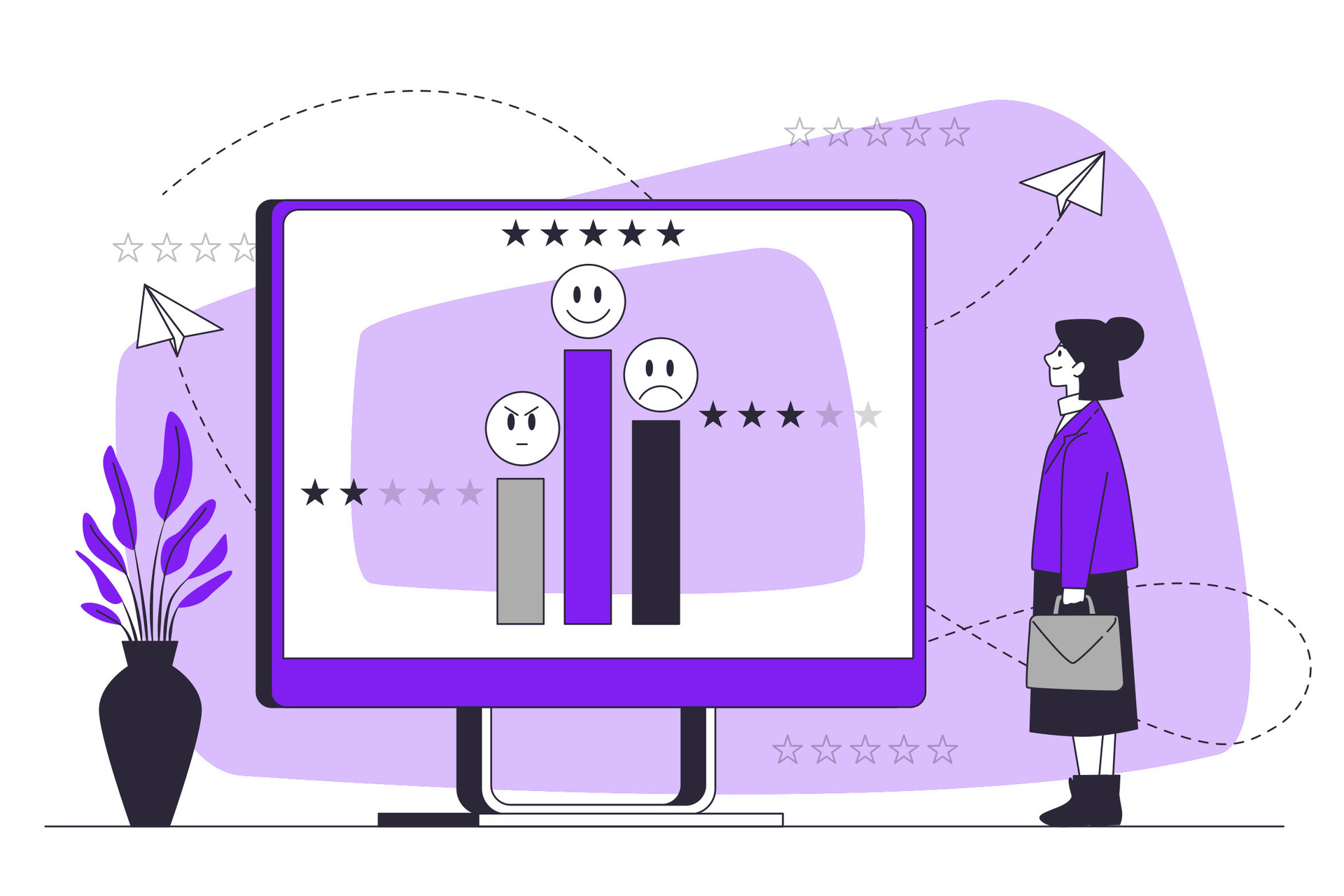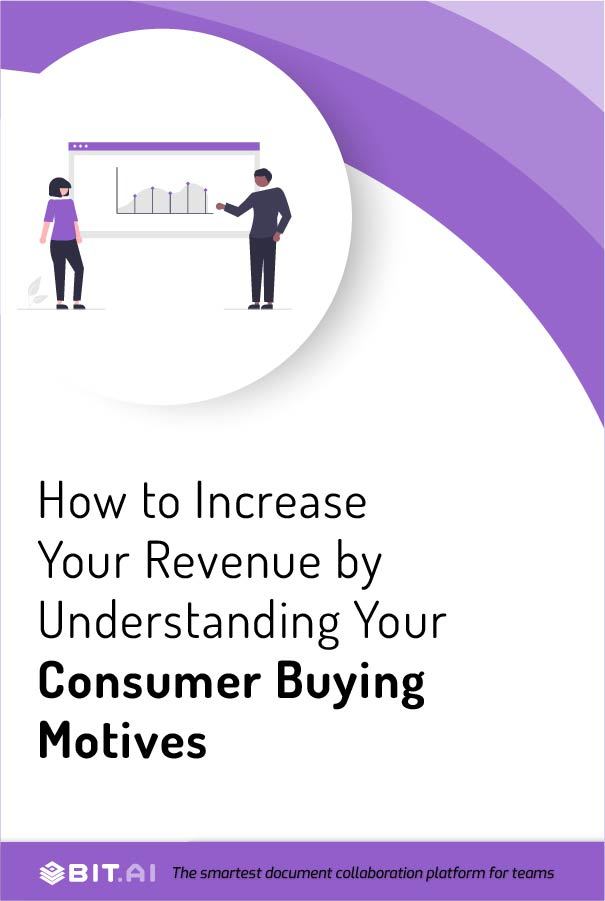Every human activity has a motive behind it.
Whether it’s a viral recipe that you saw on TikTok that has you rushing to try to replicate it on your own or the urge to go on vacation because you saw a drop-dead gorgeous scenic view on someone’s Instagram reels; the decisions we make are based on the need to satisfy a desire we have.
When you purchase anything, whether it’s a product or service, you don’t make a decision to do so just for the sake of it.
Don’t believe us? Think of it this way, if you are a person who likes to be active and let’s say you run every day, we bet that you will think it’s a great idea to invest in a great pair of running shoes. A motive fuels your desire to make the purchase.
Basically, what we’re saying is that a buyer makes the decision to purchase something only when a motive, i.e., an inner feeling or urge urges them to do so.
Buying customers’ motives may not seem like a big deal, but if you can identify them and use them to your advantage, it will help you in more ways than you can imagine. Keep reading this blog so you can find out how.
Buying Motives (Definition)
Buyer motives can be defined as the motives that persuade people’s desires so that they are compelled to buy or purchase particular goods or services.

Other definitions include a simple one put forth by D. J. Durdian which states that “Buying motives are those influences or considerations which provide the impulse to buy, induce action or determine choice in the purchase of goods and services.”
Another simple definition is by Dr. R.S. Davar and who states that “A motive is defined as an inner urge that moves or prompts a person to action.” Similarly, Berelson and Steiner define buying motives as an inner state that energizes, activates, or moves and that directs or channels behavior to work goals.”
From the different definitions, the one takeaway is that buying motives relate to the feelings and emotions of people, generating in them a desire to purchase. A person does not buy a product or service solely because of an excellent salesman pitch or a great advertisement they come across.
In actuality, the activity of buying or purchasing is due to the desire generated within the person toward the product or service.
Understanding the buying motive of a customer is crucial for the success of any company. This is because it provides the necessary knowledge to help a company target customers more efficiently.
Let’s face it, no matter how great a product is or how stellar the marketing for it may be unless the customer needs it, it is not going to matter. This is why knowing customers’ buying motives is vital in business.
On this note, let’s look at the various reasons why knowledge of buying motives is so important.
Importance of Knowing Buying Motives of Customers
1. Aids in Product Planning
Product planning requires you to have all the essential data and information. Therefore, knowing customers’ buying motives makes the job of product planning so much easier. It will help you figure out or give an idea of what color to choose, what design to model, what sizes to include, etc.
2. Helps in Promotional Methods
Knowing buying motives provides the necessary insights to choose the appropriate promotional methods for product launches. If you know what the customers find appealing, you can create advertisements that will effectively cater to their interests.
3. Facilitates Product Pricing
Some consumers may be reasonable while some may be shrewd in their outlooks. So you cannot just take a chance and put a set price on any product or service because there is a risk of overpricing as well as underpricing. Knowing their buying motives will help them decide the right price for any product.
4. Choice of Channels for Distribution
Some consumers prefer buying in bulk from wholesalers because they feel that they are getting more for their money’s worth. Others prefer the familiarity of buying from stores they frequent. This is why knowing buying motives is important because, as a seller, you can select the appropriate distribution channels that customers resonate with.
5. Generate Consumer Loyalty

Learning the habits of consumers and knowing their buying motives creates goodwill between customers and sellers. It’s a win-win situation because as a seller you gain profit by providing the product or service customers is looking for, and customers have their needs met. This goodwill is what facilitates the creation of satisfied and loyal customers.
6. Salesmanship Success
Lastly, knowledge of buying motives is the key to salesmanship success. No matter how good your sales pitch is or how foolproof you think your marketing strategies are, at the end of the day, if you don’t know what your customers want, you can never succeed in terms of salesmanship.
Now that you know the importance of knowing the buying motives of consumers, let’s go over the different types of buying motives.
The Types of Buying Motives
The main types of buying motives will be explained to you in the passages below:
1. Utility
This is the first type of buying motive. Utility means usefulness. For example, your vehicle is a utility for transportation and getting you where you need to go. It’s no secret that everyone wants to attain the maximum utility from whatever limit their income is. This is why knowing buying motives about utility is so important for sellers. This element of utility is a prominent driving force in consumers to make a purchase.
2. Fear
The second type of buying motive stems from fear. Although fear is a negative emotion, it is a powerful one that assists in selling products. This is because the instinct of self-protection is strong in all human beings. If a company does adequate research on motives related to fear, efficient strategies for sales pitches and promotion can be crafted. A great example is people taking out life insurance.
3. Finance
The third type of buying motive is a desire for money. Finances play a huge part in everyone’s lives. It’s safe to say that in terms of finance, we all desire to earn more and save as much as we can. This pertains to both the consumer and seller. A customer wants the best possible quality at the lowest price available, and a seller wants to earn the most profit from any sale. Equipped with the right information, sellers can market the most appealing advertisements to capture the attention of potential buyers. For example, slogans like ‘Better quality at a better price’ work well.
4. Sentiment
The next type of buying motive pertains to the human sentiment of love and affection. No matter how jaded or cynic a person claims to be, everyone has at least a touch of sentimentality within them. This is why emotions play such a huge part in purchasing goods. Any wise business knows to use this to its advantage. For example, affection or love for family members, friends, or a partner may lead you to buy gifts such as clothes, accessories, books, etc.
5. Ego
The ego is a powerful driving force in buying motives of consumers. Feelings of envy can act as a potent catalyst for persuading purchase. We can bet that you have at least once purchased something, not because you necessarily need it, but because someone else has it. For example, if your friend has a really cool gadget he recently bought, chances are that you will also be inclined to own one not because you really need it but because a part of your ego urges you to desire it. Sellers must therefore keep in mind this buying motive fueled by ego and use it to their advantage.
6. Trends

In today’s age of social media, being trendy comes with knowing what is in style. Trends in fashion dictate sales, especially when it comes to clothing. For example, you own a clothing brand and want to advertise it. No matter how great the quality of the product or the methods of promotion, if you design pieces that are not in style, you will hardly succeed in sales. Sellers must be up-to-date with changing fashion trends and what is currently in the season if successful sales are the end goal.
7. Health
There is quite a large niche for lifestyle and healthy living in today’s market. From promoting healthy eating and balanced lifestyles to promoting workout regimens, health is now a commodity that is advertised and sold. Examples would be food supplements, multivitamins, or protein powders on the market. As health applies to all age groups, knowing how to utilize this buying motive is a game changer.
8. Comfort and Convenience
These two buying motives drive people to purchase because who does not want comfort and convenience? Whether it’s home appliances or gadgets, as a manufacturer, you have to remember the two important elements and whether your product or service will provide comfort and satisfaction to customers. These motives are the reason people buy products such as vehicles, washing machines, air conditioners, etc.
9. Gender
Gender as a buying motive is perhaps the most commonly known motive. It’s common knowledge that men and women prefer different things. Even if it’s the same product, such as a razor for shaving, the way you market it to men and women needs different approaches. Everything from the packaging to size to the advertisement, you have to factor in gender. Sellers must therefore market products and services based on the gender of their target demographic.
10. Possessiveness
Possessiveness can be defined as the desire to own or dominate. This buying motive may seem a little surprising, but human beings are naturally possessive. It is what compels us to want to own things for ourselves. An example would be the purchase of vehicles or buildings to have as one’s possession. Sellers must remember this lesser-known buying motive because it holds weight when it comes to sales.
11. Curiosity
Curiosity is a strong desire to know or learn. Curiosity plays a prominent role in the purchasing process. For example, it is curiosity that prompts tourists to visit a new place and it is curiosity that compels consumers to purchase goods and services. Companies strive to invoke curiosity amongst their target audience, and so this buying motive is one that has always worked and one that will always work.
Now that you understand what buying motives are, how important they are, and what the different types are, you’re probably wondering how you can identify these motives. Don’t worry too much; we’ve curated three tips to keep in mind that will help you identify these motives.
How Do You Identify Buying Motives?
1. Listen
The first tip we can give you is to listen. By this, we don’t mean merely listening to your consumers for the sake of responding but actually intently listening to their feedback. This can be done using a variety of ways. You can conduct surveys, interviews, and even polls. We cannot emphasize enough that sellers should gather information through these methods and listen to the needs and desires of customers, irrespective of whether their feedback is positive or negative. Constructive criticism is very helpful, so it should not be ignored. So, your first takeaway should be that – if you want to identify customers’ buying motives, listen to them!
2. Provide a Platform for Feedback
Another way of identifying the buying motive of customers is to provide a platform for them to provide feedback. As a company, it is wise to invest in a great customer care team to listen to customers’ grievances and inquiries about what the customer wants. Note that the best form of questioning is to use open-ended questions (objective and less leading questions that allow customers to answer in detail).
3. Be Inquisitive
Being inquisitive here does not equate to being intrusive. By being inquisitive, we mean digging deeper and asking detailed questions to customers. The best approach we suggest is the three-deep questioning approach, which is a technique of asking an initial question and then digging deeper with follow-up questions to reveal the underlying buying motives, wants, needs, and challenges of a consumer.
Wrap Up
You’ve made it to the end!
Maybe not all sections of this blog pertain to the product or service you are intending to market and sell. Still, we’ve attempted to elaborate on all possible angles that can help you understand customers better. We hope you now have a better idea of buying motives and how to identify them.
Now that you’re equipped with all the know-how related to buying motives, all that’s left to do is incorporate them into your business plan or strategy. Best of luck!
Loved reading the content? Then you’ll definitely enjoy our other content too!
Customer Journey Map: Definition, Importance, and Process!
Buyer’s Journey: What is it & it’s 4 Key Stages You Must Know!
What is Product Branding? 8 Product Branding Examples!
11 Amazing Sales Promotion Examples for Your Product!
Customer Segmentation: Definition, Importance, Types & Process



